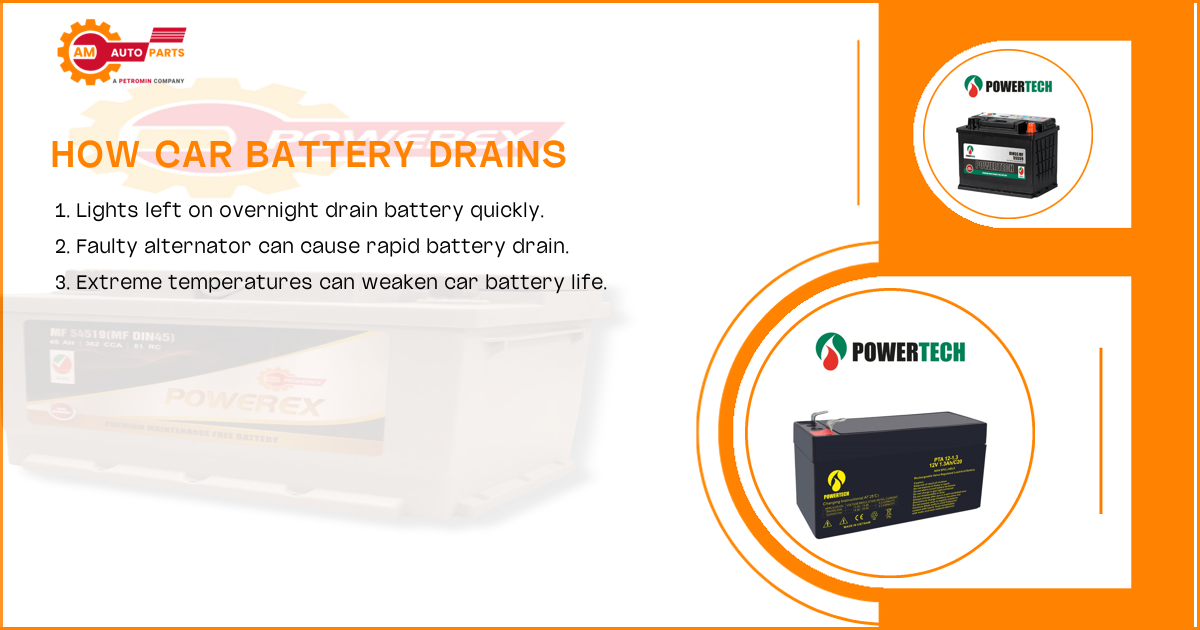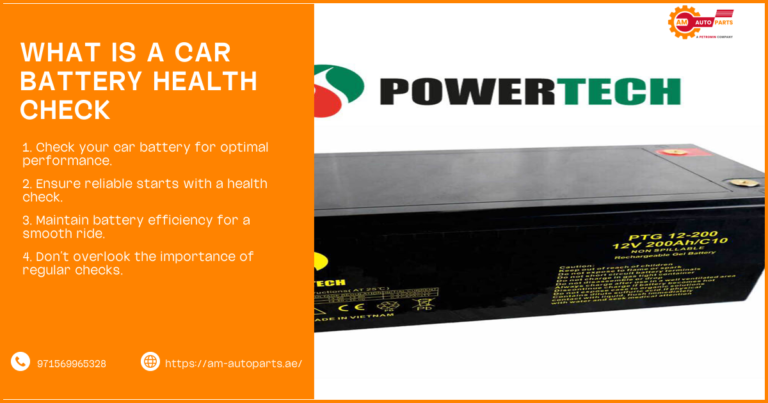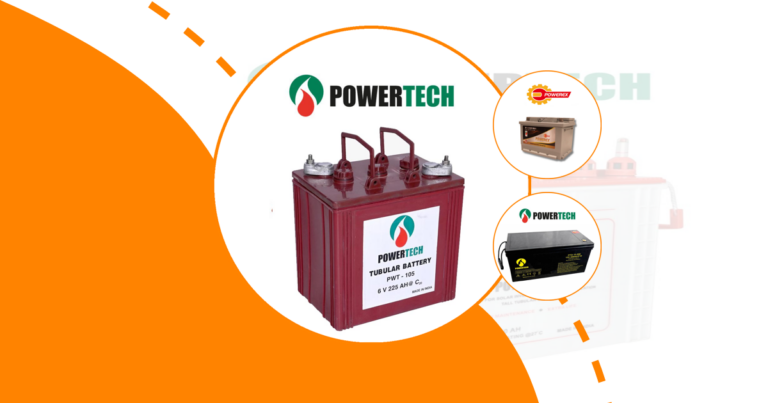How Car Battery Drains
Car batteries are essential for powering your vehicle’s electrical components and starting the engine. However, they can sometimes drain unexpectedly, leaving you stranded. Understanding how car battery drains, what drains car battery overnight, and what drains your car battery can help you prevent these issues and maintain your vehicle’s performance.
Common Causes of Car Battery Drainage
Leaving Headlights or Interior Lights On
One of the most common reasons for a car battery to drain is leaving the headlights or interior lights on. These lights consume a significant amount of power, and if left on overnight, they can completely deplete the battery. It’s crucial to ensure all lights are turned off when exiting the vehicle.
- Always double-check that headlights and interior lights are off before leaving the car.
- Consider installing an automatic light-off feature if your vehicle doesn’t have one.
- Regularly inspect light switches to ensure they are functioning correctly.
Parasitic Draws from Electrical Components
Parasitic draws occur when electrical components continue to consume power even when the car is off. This can be due to faulty wiring, aftermarket accessories, or malfunctioning components. Identifying and fixing these issues can prevent unnecessary battery drainage.
- Use a multimeter to detect parasitic draws.
- Disconnect aftermarket accessories to see if they are the cause.
- Consult a professional mechanic if you suspect faulty wiring.
Extreme Weather Conditions
Extreme temperatures, both hot and cold, can affect battery performance. Heat can cause battery fluid to evaporate, while cold can reduce the battery’s ability to hold a charge. Protecting your car from extreme weather can help maintain battery health.
- Park in a garage or shaded area during hot weather.
- Use a battery blanket or heater in cold climates.
- Regularly check battery fluid levels and top up if necessary.
Corroded or Loose Battery Connections
Corroded or loose battery connections can impede the flow of electricity, leading to a drained battery. Regularly inspecting and cleaning battery terminals can prevent this issue.
- Clean battery terminals with a mixture of baking soda and water.
- Ensure battery cables are tightly connected.
- Replace corroded connectors to maintain a good electrical connection.
Overnight Battery Drain Culprits
Faulty Alternator
A faulty alternator can fail to charge the battery while the engine is running, leading to a drained battery overnight. If you notice dimming lights or a warning light on the dashboard, it might be time to check the alternator.
- Test the alternator output with a multimeter.
- Listen for unusual noises from the alternator.
- Replace the alternator if it fails to charge the battery properly.
Old or Weak Battery
An old or weak battery may not hold a charge as effectively, leading to overnight drainage. Car batteries typically last 3-5 years, so it’s essential to replace them when they show signs of aging.
- Check the battery’s age and replace it if it’s over 3 years old.
- Look for signs of a weak battery, such as slow engine cranking.
- Consider a high-quality replacement battery for better performance.
Short Trips and Infrequent Driving
Short trips and infrequent driving can prevent the battery from fully charging, leading to gradual drainage. Driving longer distances can help maintain the battery’s charge.
- Aim for at least 20-30 minutes of driving to allow the alternator to charge the battery.
- Use a battery maintainer if the car is not driven regularly.
- Plan longer trips to keep the battery healthy.
Diagnosing Battery Drain Issues
Using a Multimeter to Test Battery Voltage
A multimeter is a valuable tool for diagnosing battery issues. By testing the battery voltage, you can determine if the battery is holding a charge or if there’s a problem.
- Set the multimeter to DC voltage and connect it to the battery terminals.
- A healthy battery should read around 12.6 volts when the engine is off.
- If the voltage is below 12 volts, the battery may need charging or replacement.
Performing a Parasitic Draw Test
A parasitic draw test can help identify components that are draining the battery when the car is off. This test involves measuring the current draw from the battery.
- Disconnect the negative battery cable and connect a multimeter in series.
- A draw of more than 50 milliamps indicates a parasitic drain.
- Identify and fix the component causing the excessive draw.
Checking Alternator Output
The alternator is responsible for charging the battery while the engine is running. Checking its output can help determine if it’s functioning correctly.
- Start the engine and measure the voltage at the battery terminals.
- A healthy alternator should produce between 13.8 and 14.4 volts.
- If the voltage is outside this range, the alternator may need repair or replacement.
Preventing Car Battery Drainage
Regular Battery Maintenance
Regular maintenance can extend the life of your car battery and prevent drainage issues. This includes cleaning terminals, checking fluid levels, and testing the battery’s charge.
- Clean battery terminals every few months to prevent corrosion.
- Check and top up battery fluid levels if necessary.
- Test the battery’s charge regularly to ensure it’s holding a charge.
Driving Longer Distances
Driving longer distances allows the alternator to fully charge the battery, reducing the risk of drainage. Aim for at least 20-30 minutes of driving to maintain battery health.
- Plan longer trips to keep the battery charged.
- Avoid frequent short trips that don’t allow the battery to charge fully.
- Consider using a battery maintainer for infrequent driving.
Disconnecting Battery During Long-Term Storage
If you plan to store your vehicle for an extended period, disconnecting the battery can prevent drainage. This is especially important for vehicles stored in extreme temperatures.
- Disconnect the negative battery cable to prevent drainage.
- Store the battery in a cool, dry place if possible.
- Use a battery maintainer to keep the battery charged during storage.
When to Replace Your Car Battery
Signs of a Failing Battery
Recognizing the signs of a failing battery can help you avoid unexpected breakdowns. Common signs include slow engine cranking, dim lights, and a swollen battery case.
- Slow engine cranking is a common sign of a weak battery.
- Dim headlights or interior lights can indicate a failing battery.
- A swollen battery case may be due to excessive heat or overcharging.
Average Lifespan of Car Batteries
Car batteries typically last between 3 to 5 years, depending on usage and maintenance. Regular testing and maintenance can help extend the battery’s lifespan.
- Most car batteries last 3-5 years with proper care.
- Regular maintenance can help extend the battery’s life.
- Replace the battery if it’s over 3 years old and showing signs of wear.
Choosing the Right Replacement Battery
Choosing the right replacement battery is crucial for optimal performance. Consider factors such as size, capacity, and brand reputation when selecting a new battery.
- Ensure the replacement battery fits your vehicle’s specifications.
- Consider a high-capacity battery for better performance.
- Choose a reputable brand for reliability and longevity.
Impact of Modern Car Features on Battery Life
Always-On Electronics and Their Effect
Modern cars come equipped with numerous electronics that can drain the battery even when the car is off. Features like keyless entry, alarm systems, and infotainment systems can contribute to battery drainage.
- Always-on electronics can drain the battery over time.
- Consider disabling unnecessary features when the car is off.
- Regularly check the battery’s charge to prevent drainage.
Start-Stop Technology and Battery Strain
Start-stop technology, designed to improve fuel efficiency, can strain the battery by frequently starting and stopping the engine. This can lead to increased wear and tear on the battery. Battery replacement threshold is the point when a device’s battery becomes too weak and needs to be changed It helps users know when it’s time to get a new battery for their gadget Ideal car voltage A car battery should have about 12 to 14 volts for the vehicle to run properly
Jumpstart dead battery is a quick way to get your car running again when the battery is out of power You can use special cables to connect your car’s dead battery to another car’s working battery to bring it back to life Automotive Power Depletion happens when a car’s battery loses energy over time This can make it hard for the car to start or run its electrical parts properly
Battery selection guide Choose the right battery for your device by looking at size voltage and how long it lasts Automotive energy solutions help cars and trucks run using different power sources like electricity batteries and hydrogen fuel cells instead of just gasoline These new ways of powering vehicles can make them cleaner and better for the environment
- Start-stop technology can increase battery strain.
- Ensure the battery is designed to handle frequent starts and stops.
- Regularly test the battery’s charge to ensure it’s functioning properly.
Battery Maintenance Tips for Optimal Performance
Cleaning Battery Terminals
Cleaning battery terminals can prevent corrosion and ensure a good electrical connection. This simple maintenance task can help extend the battery’s life.
- Use a mixture of baking soda and water to clean terminals.
- Ensure terminals are dry before reconnecting cables.
- Regularly inspect terminals for signs of corrosion.
Proper Charging Techniques
Proper charging techniques can help maintain the battery’s health and prevent overcharging. Using a quality charger and following manufacturer guidelines is essential.
- Use a charger with an automatic shut-off feature.
- Follow the manufacturer’s guidelines for charging times.
- Avoid overcharging, as it can damage the battery.
Using Battery Maintainers for Long-Term Storage
Battery maintainers are useful for keeping the battery charged during long-term storage. They provide a low, steady charge to prevent drainage.
- Use a battery maintainer for vehicles stored for extended periods.
- Ensure the maintainer is compatible with your battery type.
- Regularly check the battery’s charge while using a maintainer.
By understanding how car battery drains, what drains car battery overnight, and what drains your car battery, you can take proactive steps to maintain your vehicle’s battery health. Regular maintenance, proper usage, and timely replacement can help ensure your car battery remains reliable and efficient.
FAQ’s
How long can a car battery sit unused?
A car battery can sit unused for about two to three months before it starts to lose its charge. However, factors like temperature and battery condition can affect this timeframe. Using a battery maintainer can help keep the battery charged during periods of inactivity.
Can a car battery die suddenly?
Yes, a car battery can die suddenly, especially if it’s old or weak. Factors like extreme temperatures, parasitic draws, or a faulty alternator can contribute to sudden battery failure. Regular maintenance and testing can help prevent unexpected battery death.
How often should I start my car to keep the battery charged?
To keep the battery charged, it’s recommended to start your car at least once a week. Letting the engine run for about 15-20 minutes can help maintain the battery’s charge. If the car is not driven regularly, consider using a battery maintainer.






